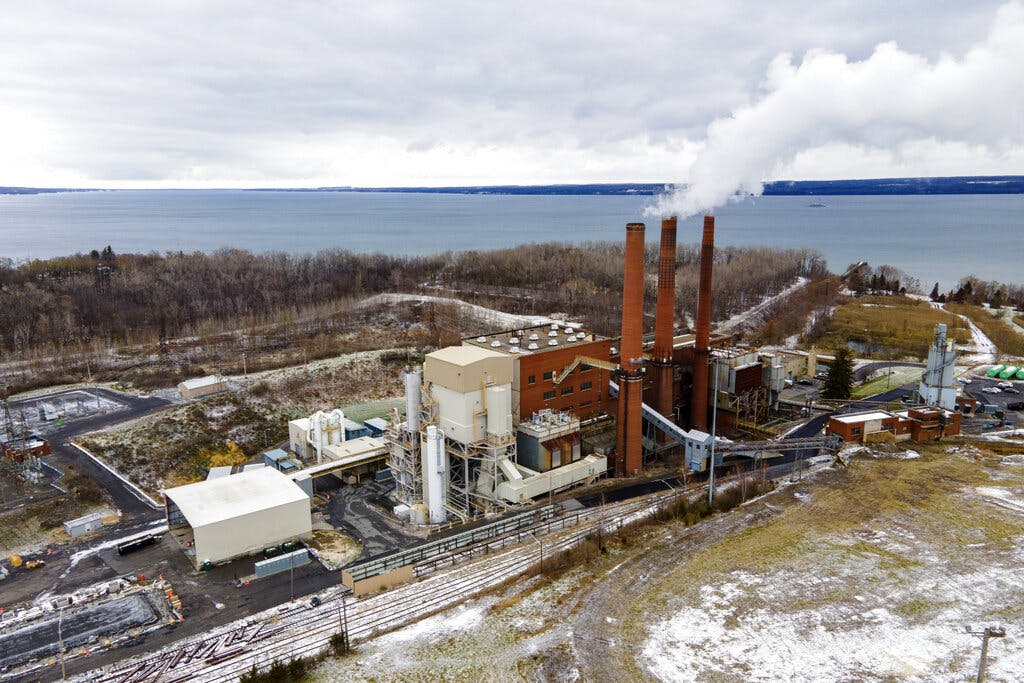Decision on Cryptomining Plant’s Permit Could Set a Precedent
Opponents who fear environmental damage are seeking to use the permitting process and legislation to enact a moratorium on proof-of-work cryptomining in New York.

A decision due March 31 could prove a major milestone in the battle over “proof-of-work” Bitcoin mining in New York and possibly set a precedent for the rest of the country.
New York’s Department of Environmental Conservation is set to decide whether to renew emissions permits for Greenidge Generation’s Finger Lakes mining facility that allow for operation of a former power plant.
This plant in particular has come under fire as opponents believe it is abusing its permit by operating with a different purpose than that for which it was approved.
The plant operates under a “Certificate of Public Convenience and Necessity,” a permit typically issued to utility companies to operate in New York State.
“Greenidge is taking advantage of the absence of regulations in the quickly growing field of proof-of-work cryptocurrency mining, operating with grandfathered-in permits granted for a vastly different purpose,” a lawyer and activist, Susan Lerner, wrote in an open letter.
In 2016, the Greenidge plant was given a Certificate of Public Convenience and Necessity to operate as a power plant. The renewal of the permit is dependent on whether “the proposed grid connected power plant is needed and will serve the public’s interest,” according to the New York Public Interest Research Group’s counsel, Russ Haven.
“For a plant like Greenidge, where its original authorized purpose has been converted from supporting grid reliability to primarily powering cryptocurrency proof-of-work mining, the basis for the underlying certificate is — at a minimum — suspect,” Mr. Haven said.
Greenidge Generation did not immediately respond to a request for comment.
To really get to the meat of the dispute, one needs to understand key terms such as cryptomining and behind the meter, and what these mean in the context of electricity generation.
Cryptoming is the process of creating cryptocurrencies. A common analogy is that cryptomining is a bunch of computers competing to, in effect, solve sudoku puzzles.
The first computer to solve the puzzle is rewarded with a single unit of cryptocurrency. Bitcoin is currently priced at more than $42,000 per coin, with all-time highs topping $60,000.
This is an oversimplification but what is important to know is that this process is incredibly electricity-intensive. The University of Cambridge keeps a running log, which currently estimates the Bitcoin network uses about 138.34 terawatt hours of electricity a year.
That is more power than is used in the global gold mining industry every year (131 TWh), and more than Ukraine (124.5TWh) and almost as much as Egypt (149.1 TWh) uses every year.
The significance of the Greenidge plant is that it is a “behind the meter” plant, meaning it does not draw power from the grid. Rather, power is generated at the plant for the purpose of mining Bitcoin, and any excess electricity is theoretically sold into the grid.
This means the plant does not drive up the price of electricity in the area, but it also means the plant is incentivized to run at full capacity all the time. The operation it replaced operated only at times of peak electricity demand.
Greenidge is permitted to generate 107 megawatts, which translates to 937,320 megawatt hours of electricity per year. The average New York household uses about 6.86 megawatt hours per year.
Some simple division shows that this power plant, running at full capacity, could power about 136,636 New York households for an entire year at peak efficiency.
This estimate is roughly in line with a 2022 study published in the International Journal of Life Cycle Assessment by two Hobart and William Smith Colleges professors.
“Greenidge is the first fossil-fueled power plant in the USA to mine Bitcoin behind the meter,” the study reads. “Greenidge is not an isolated instance, but merely the first of many players in a new market.”
Opposition to the plant should not be “about trying to block Bitcoin, it’s, ‘Okay, let’s make this more efficient and less energy intensive,’” an economist and co-author of the study, Thomas Drenan, told The New York Sun.
The plant “cannot compete in the electricity market,” he added. “I don’t think there’s any place for using something so inefficient to generate electricity that’s not for the local region.”
Opponents are seeking to use the permitting process and legislation in both the state assembly and the senate to enact a moratorium on proof-of-work cryptomining in New York.
There is no appeal process for the permits in question. The plant will be able to re-apply after one year.
Citing environmental damage from the plant as a main complaint, opponents have created an unusually broad coalition that includes many Finger Lakes business owners. They are hoping to recreate the successes of New York’s fracking ban.
Whether officials in Albany ultimately will be sympathetic to the opponents or to the operators of the plant, this dispute is the first of its kind in the United States and its result could set the precedent on an important emerging question of energy — and monetary — policy.

